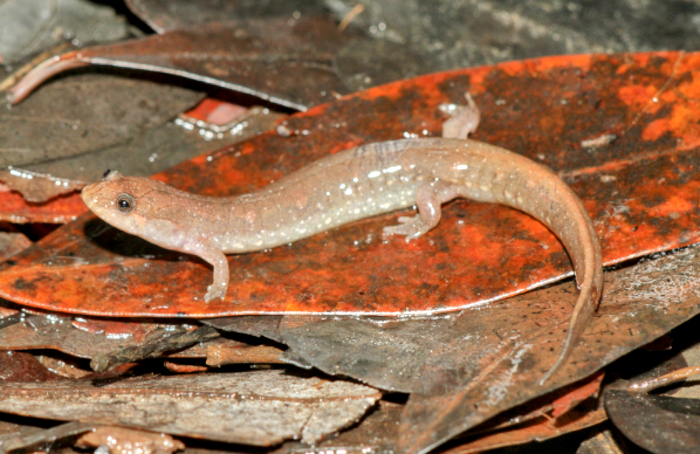
New salamander sheds light on a biodiversity hotspot
In a study led by George Washington University, experts have discovered a new species of salamander from the Gulf Coastal Plain of southeastern Mississippi and southwestern Alabama. According to the researchers, the region has been studied intensively for hundreds of years, but nonetheless still contains abundant undescribed diversity.
“This discovery shows us how much more there is to learn even in our own backyards,” said Professor R. Alexander Pyron. “The famed naturalist E.O. Wilson called this region ‘America’s Amazon,’ where ivory-billed woodpeckers and red wolves once lived. We are losing biodiversity at a dramatic rate, while still discovering how much was originally there. Salamanders are among the most imperiled animals globally, and we’ve yet to understand their true biodiversity.”
The experts report that the new species of salamander, Desmognathus pascagoula, is similar to another species that was recently discovered, Desmognathus valentinei. The team identified morphological, genetic and geographic aspects of D. pascagoula that differ from D. valentinei.
When the researchers sequenced the genomes of the two species, they pinpointed 881 genetic variations. They also found subtle differences in the body structure of D. pascagoula and D. valentinei. For example, D. pascagoula has a longer body that is more slender and a narrower head and nostrils.
“Many of these dusky salamanders are cryptic, meaning they can’t easily be told apart with the naked eye, which is one reason they went undiscovered for so long,” said Professor Pyron. “Only with genome sequencing can we see how different they really are. Then, precise measurements of preserved specimens reveal tiny differences in things like the width of the head, which are otherwise imperceptible.”
According to the researchers, further research is needed to provide insight both into the biology of D. pascagoula, as well as its former and current geographical extent.
“This discovery increases knowledge of the biodiversity in the southeastern United States Coastal Plain, a candidate region meeting the global criteria for a ‘biodiversity hotspot,’ and underscores the amount of cryptic diversity likely remaining to be discovered and described in Nearctic salamanders,” wrote the study authors.
The research is published in the journal Zootaxa.
Image Credit: Dave Beamer
–—
By Chrissy Sexton, Earth.com Staff Writer












